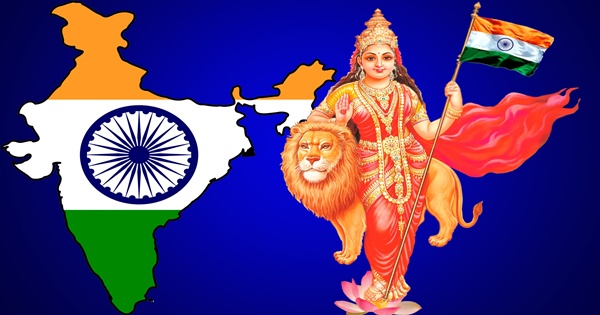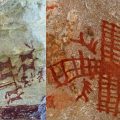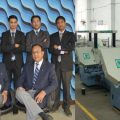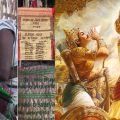Wooden Toys of Etikoppaka: Let this Craft Survive
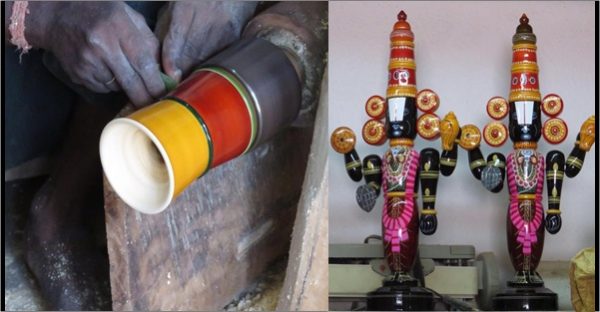
The room is full of the monotonous drone of the lathe machine. An artisan fixes a rough cut circular block of wood at the head of the machine and hammers it in place. The machine starts whirring, and the man works at the block with a chisel.
Right before our eyes, the rough edges of the wooden block disappear and it transforms into an elegant pen holder. The artisan then takes a lacquer stick and applies it to the wood. The heat from the turning lathe melts the stick and the dull beige of the wood gets transformed into a vibrant, metallic melange of colours.
The artisan then takes a piece of a rough cloth and polishes the pen-holder to perfection, occasionally touching the piece of cloth to his forehead to absorb a few droplets of sweat. The salt in the sweat brings out the sheen of the colours, he tells me. This is actual sweat and elbow grease at work!
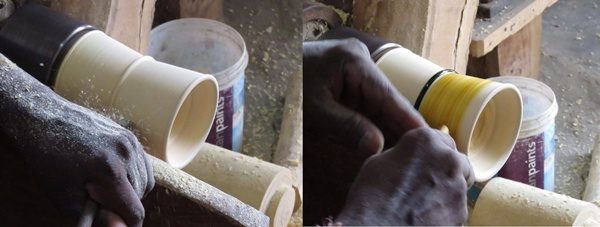
the crafting process
We are in Etikoppaka, a small village on the banks of the Varaha river in the Vishakhapatnam district of Andhra Pradesh. Etikoppaka is famous for its Turned Wood Lacquer Craft toys. Locally, the toys are known as Etikoppaka Bommalu.
The wood used for making the toys is sourced from a locally grown tree called Ankudu. It is lightweight and easy to cut, and therefore cannot be used for any other purpose other than making toys or as firewood. The colour comes from lacquer sticks.
Lacquer or lac is a colourless resinous secretions of various insects. It is then mixed with colours and dried into long sticks. The resin is flammable and holds colour easily. It melts easily at the application of heat. Earlier the colours used had mostly organic origins, but nowadays some chemical colours are mixed with vegetable colours. This gives the toy-makers a larger variety of shades to work with. But the owner of the unit tells me that toys like the kitchen set are still made from purely vegetable dyes, as they are handled by small children.
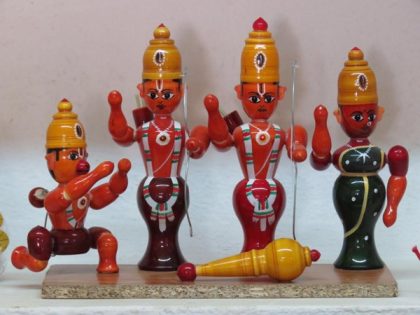
Etikoppaka Toys-The Ramayana
Earlier, the toy makers of Etikoppaka used to make traditional objects like the full kitchen set for little girls, toy carts etc. Nowadays, new designs are being incorporated and the toy-makers have a huge repertoire of objects including wooden jewellery, bangles, Murtis of Gods and Goddesses, Matrushka dolls, wind chimes and hair accessories.
Traditionally, the toys are packed and sold in pretty hand-made containers woven from palm fronds – an art form by itself! The toys of Etikoppaka are a joy to behold due to their soft, rounded contours and shining, vibrant colours.
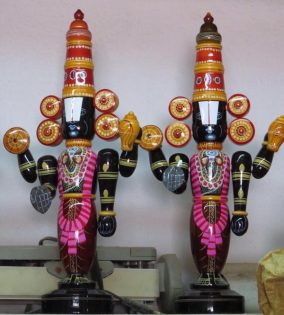
Etikoppaka toys got the GI tag in 2017. But the stiff competition from machine made wooden toys and products from China have affected the market badly. There are over 250 toy making units in Etikoppaka dependent on the survival of this craft. Let us not let it die!
Pics by A. S. Diwakar
Shefali Vaidya
Latest posts by Shefali Vaidya (see all)
- Life Lessons: How One Man Lost Everything and Reclaimed - November 21, 2024
- Handwoven Textiles: The Original Make In India Product - November 21, 2024
- Khadi – The Freedom Fabric - November 21, 2024



